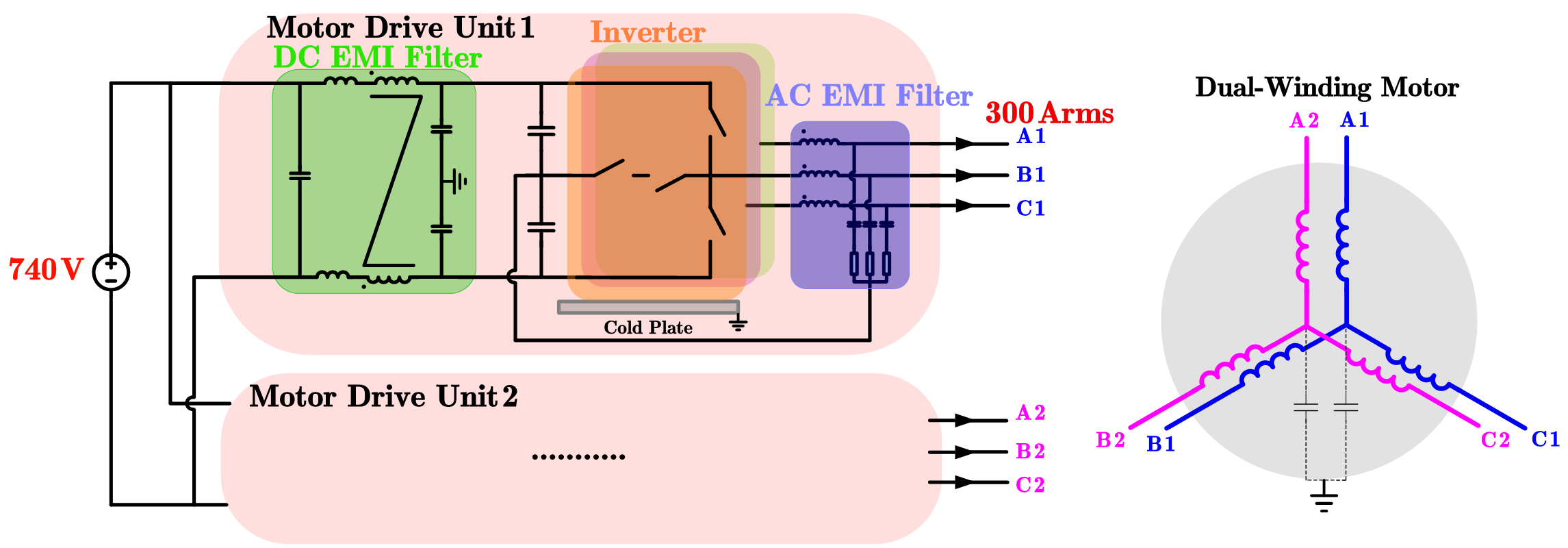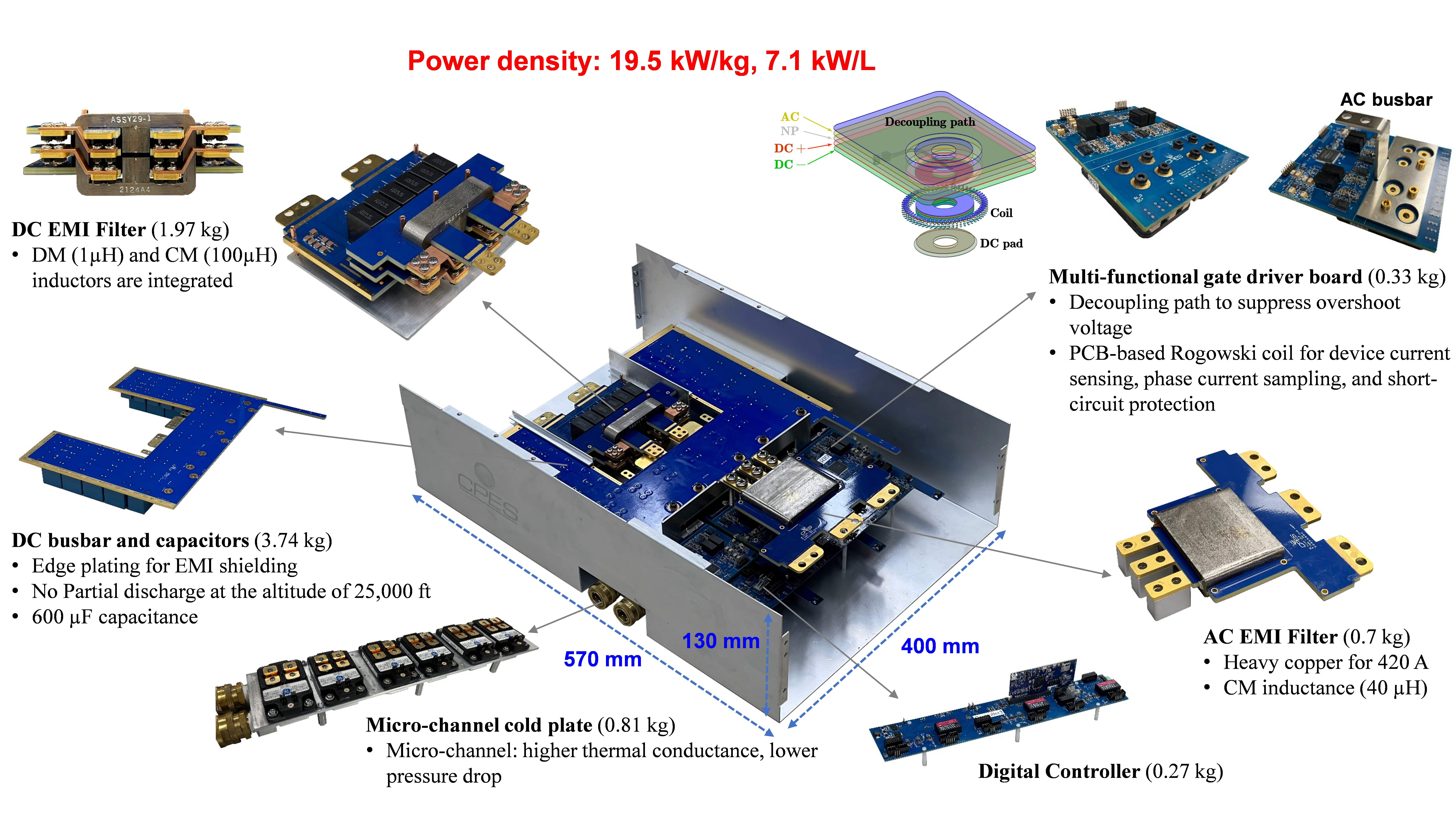LIBRARY
Design and Optimization of 2x211-kW SiC-Based Aircraft High-Speed High-altitude Motor Drive System with High Power Density

A three-level (3-L) T-type topology is adopted to allow for lower electromagnetic interference (EMI) noise and a smaller EMI filter. A high-density design that integrates commutation loops, a printed circuit board (PCB) based Rogowski coil current sensor, and gate-driver circuits are proposed. The conventional heavy-copper laminated busbar, bulky hall current sensors, and short-circuit protection circuits are all eliminated.

The inner-circulating EMI filter is developed to reduce the bearing current and meet the DO-160 standard. Special insulation and thermal designs are implemented to resolve the issues of partial discharge and heat dissipation at high altitudes. A neutral point (NP) potential balance scheme with a feedforward design is developed to mitigate the NP ripple for high-speed operation, and a loss-balance scheme is proposed to solve the overheating issue in clamping switches caused by the breakaway torque of the propeller.






















































































